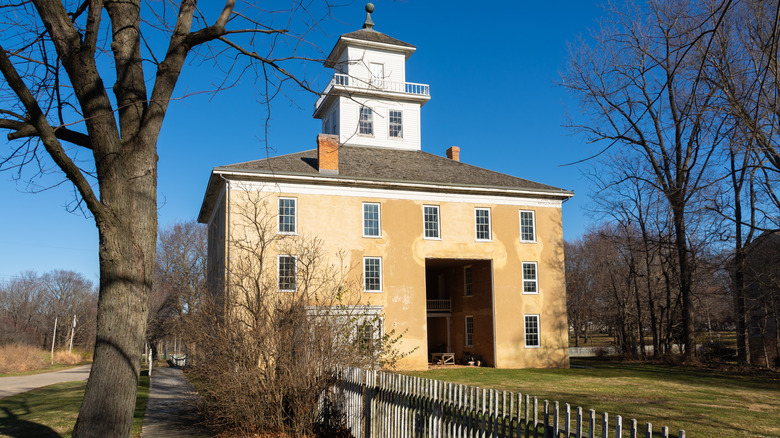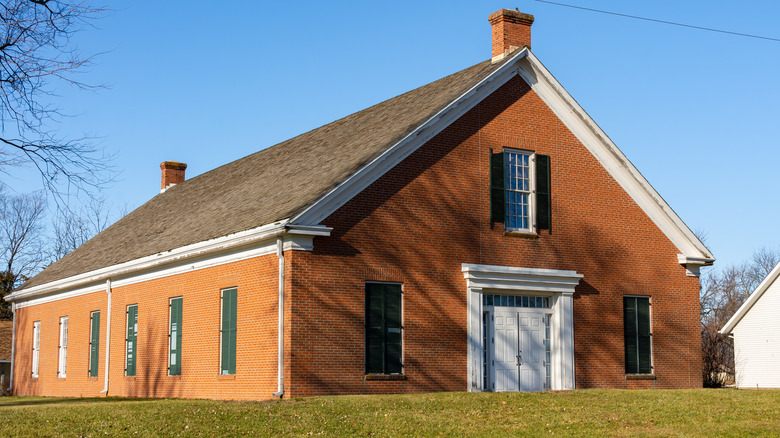A Historic Illinois Prairie Village Is Preserving Swedish Heritage With Handmade Crafts And 19th-Century Charm
Illinois boasts a long and rich history, from the Native indigenous populations, through the many migrations from Europe, and all the way to the Civil War era. Setting foot in the land of Lincoln is already a trip back in time, but not many know that some remote corners of the state are preserving their European heritage, such as the prairie village of Bishop Hill on the northwestern flank bordering Iowa.
Once a hotspot of migration to the States, Bishop Hill's first community was founded by a group of dissident Swedes led by Protestant preacher Eric Janson. This thousand-strong group brought with them a microcosm of Scandinavian traditions and customs, successfully implanting them in their new home in the Prairie State. The culture they kept was so strong that it endures to this day, with traditional festivals such as a midsummer fest being celebrated annually, as well as crafts such as woodwork and weaving, which are still alive and kicking in Bishop Hill.
Adding to town's charms is its off-grid feel, granting it the title of "Utopia on the Prairie" due to its strong community, and its location in the peaceful Illinois greenery. While that makes it tricky to reach on public transport, it's worth having your own wheels in Illinois, the state crowned by Samantha Brown as one of America's most underrated road trip states. Start on Interstate 34, which connects Bishop Hill with Chicago, 163 miles to the North, and Springfield to the south, about 130 miles away. If you are traveling between the Windy City and the capital on an ultimate Route 66 Illinois trip full of quirky and historical attractions, Bishop Hill is a perfect in-between stop to refuel on colonial history and collect handmade souvenirs.
Take in colonial history in Bishop Hill's historic town center
If you stroll through Bishop Hill today, you will see a variety of colonial houses, places of worship, and civic function buildings, most of which are in good shape. But the strong heritage of Bishop Hill wasn't always as healthy as it is today. Once thriving in the 1870s, many buildings fell into disrepair within the next century. It wasn't until the 1970s that the wider community took up arms to restore and preserve the Swedish sites that make this town so unique. With help from the Swedish Royal Family itself, descendant families started rebuilding and reviving the heritage that their ancestors had bequeathed them.
In order to take in the 19th-century charm that this corner of Illinois offers, you should start your tour from the top of Bishop Street, where Bishop Hill State Historic Site sits today. This quaint town is very walkable, so you'll be able to check out every historic site as you walk down its main street.
The historic site consists of about seven locations, all built between the 1840s and 1860s, plus the Bishop Hill Museum, a contemporary exhibition space narrating the history of the town. The oldest site, the Colony Church, was built in 1848 and has been classed as one of Illinois' most endangered heritage places. On site, you also have the Colony Barn and the Ox Boys' Dormitory built in the 1850s. This location is considered one of the foundation stones of the colony, and the beating heart of Swedish religious leader Eric Janson's preaching. On the opposite street, another key historic location is the Bjorklund Hotel, featuring stunning colonial architecture as well as period furnishings, but it is only open during select events.
Have a Scandi time steeped in Bishop Hill's Swedish heritage
Fancy some Jordbruksdagarna? No, it's not a complicated cocktail or tongue-twister. Bishop Hill recreates these Swedish "earth work days" with celebrations including craft-making, games, food, and music. Taking place every September, this great fall tradition is a marvelous way to experience the traditions Scandi colonists brought with them to the New World. These include craft activities such as metalwork, weaving, wood carving, and even rope making.
You'd be wrong to think artisanal work is just a one-off event in Bishop Hill. As it's such a big part of Swedish colonial history, the town keeps artisanal places alive all year long. One such location is Bishop Hill Creative Commons, a gallery where local artists and artisans display their work. Conveniently, it's located right opposite the historic Colony Church. Not only does the venue work as a display space where people can support local crafts, it's also a place where people come to teach — and to learn — different arts.
On the back of this busy venue, Bishop Hill also organizes a Festival of the Arts every August, yet another occasion where visitors can enjoy artsy sessions, including painting en plein-air. There's also a display celebrating traditional Swedish-style pottery, where food is served in handmade bowls that you get to keep. And while you may be inspired to book a trip to the famed Scandinavian regions rich in fairytale castles, national parks, and great cities, you don't need to fly all the way to Europe to taste a slice of Scandi heritage, when you can experience it in Bishop Hill.


